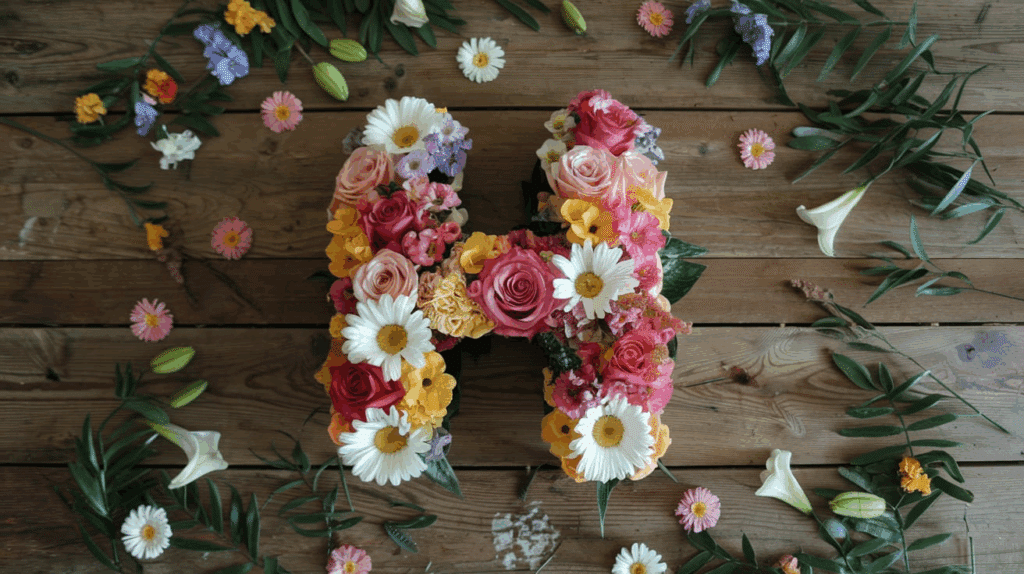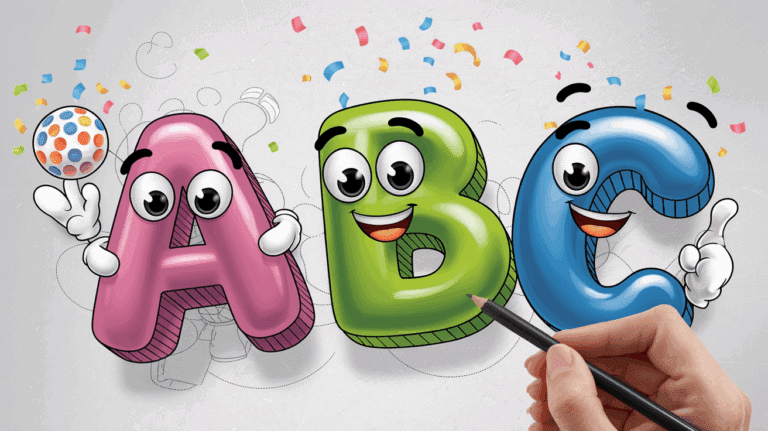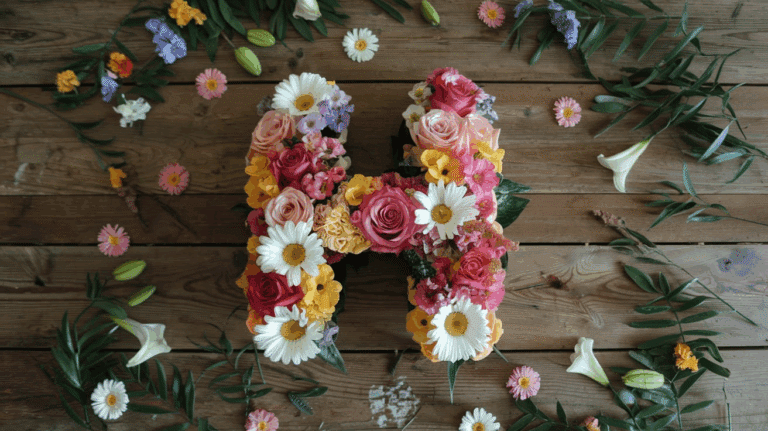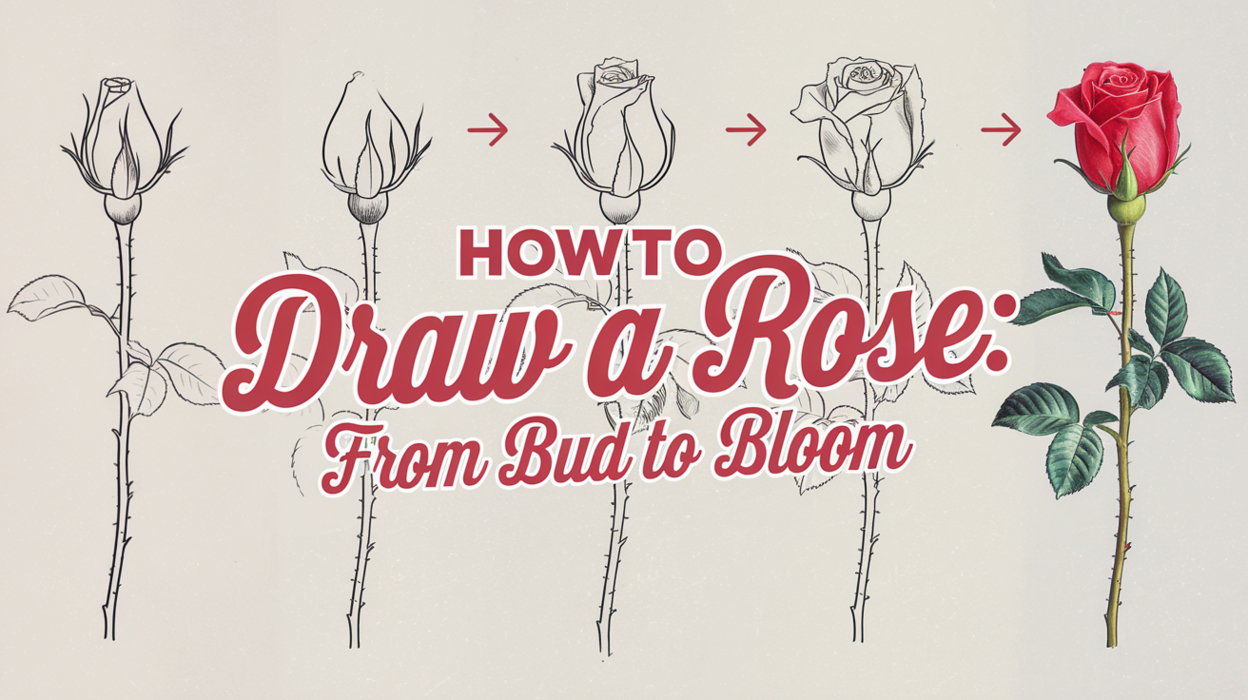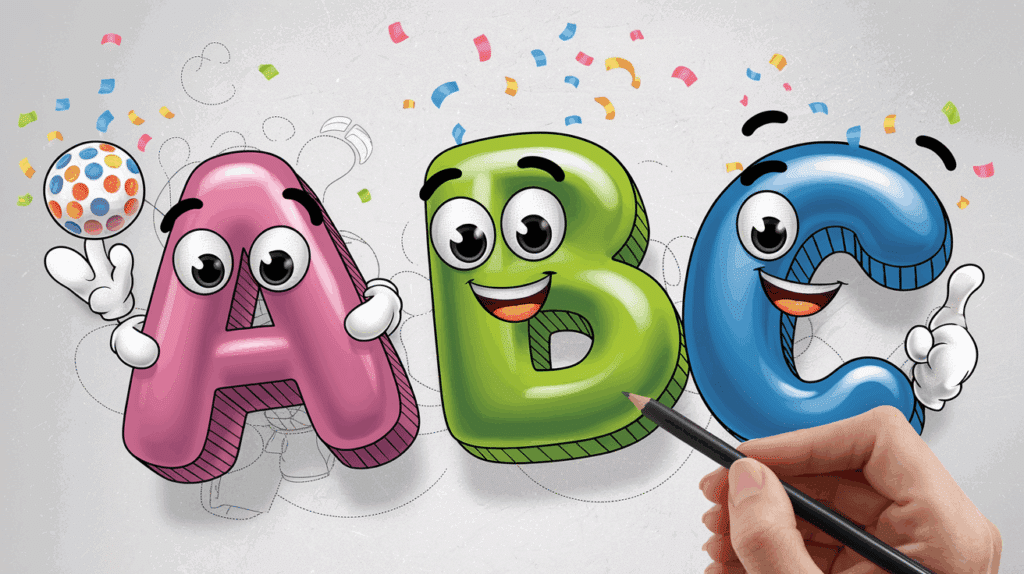Home gardeners often search for plants that add unique beauty to their spaces.
Flowers that start with H offer a wonderful option many overlook. From humble hibiscus to bold blooms, these plants bring special charm to any garden setting.
Wouldn’t it be helpful to know which H-flowers might work best in your specific garden conditions? Many gardeners spend hours trying to find this exact information.
The good news? This guide presents a list of flowers that start with H for your garden.
Each flower comes with useful planting tips and visual descriptions to help you select the perfect additions.
Ready to find the ideal H-flowers for your garden? Keep reading to learn about these wonderful plants that can transform your outdoor space.
Top Picks: Gorgeous Flowers That Start with H
Looking for standout plants to add to your garden collection? The following H flowers rank among the most popular choices for both new and experienced gardeners.
These selections combine beauty, resilience, and distinctive features that make them worthy additions to any outdoor space.
1. Hyacinth
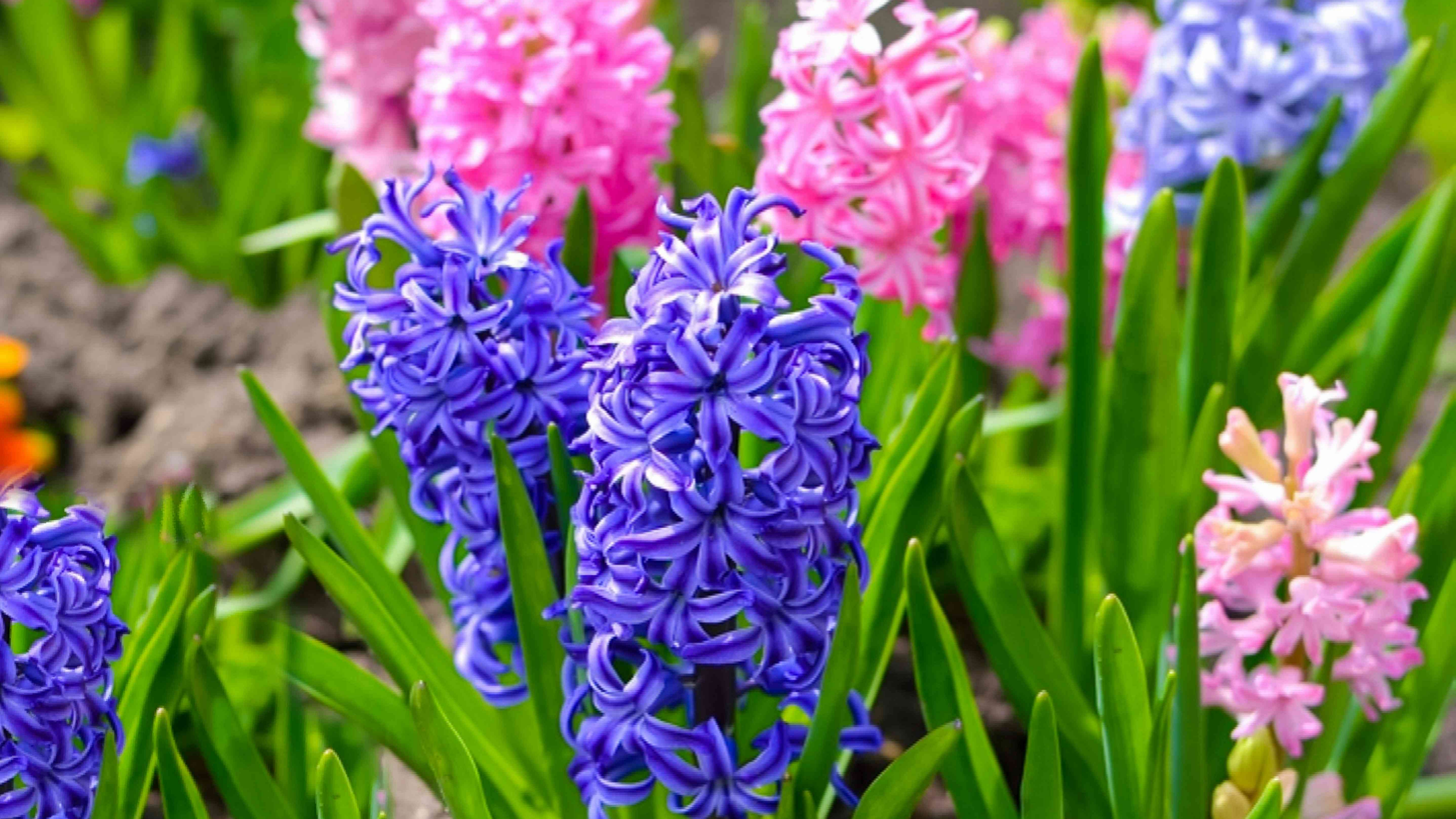
Hyacinths are fragrant flowering plants known for their dense clusters of colorful, bell-shaped blooms. Though often treated as ornamental, they are toxic and not typically consumed as fruit or food.
| Category | Details |
|---|---|
| Scientific Name | Hyacinthus orientalis |
| Harvesting Season | Spring |
| Commonly Found Region | Mediterranean, parts of Asia |
| Blooming Period | March to April |
| Symbolism | Peace, rebirth, and sincerity |
| Benefits | Aromatherapy, ornamental beauty |
How to Plant: Plant bulbs in fall, 4 inches deep in well-drained soil.
Fun Fact: Ancient Greeks associated hyacinths with Apollo and mourning.
2. Hellebore
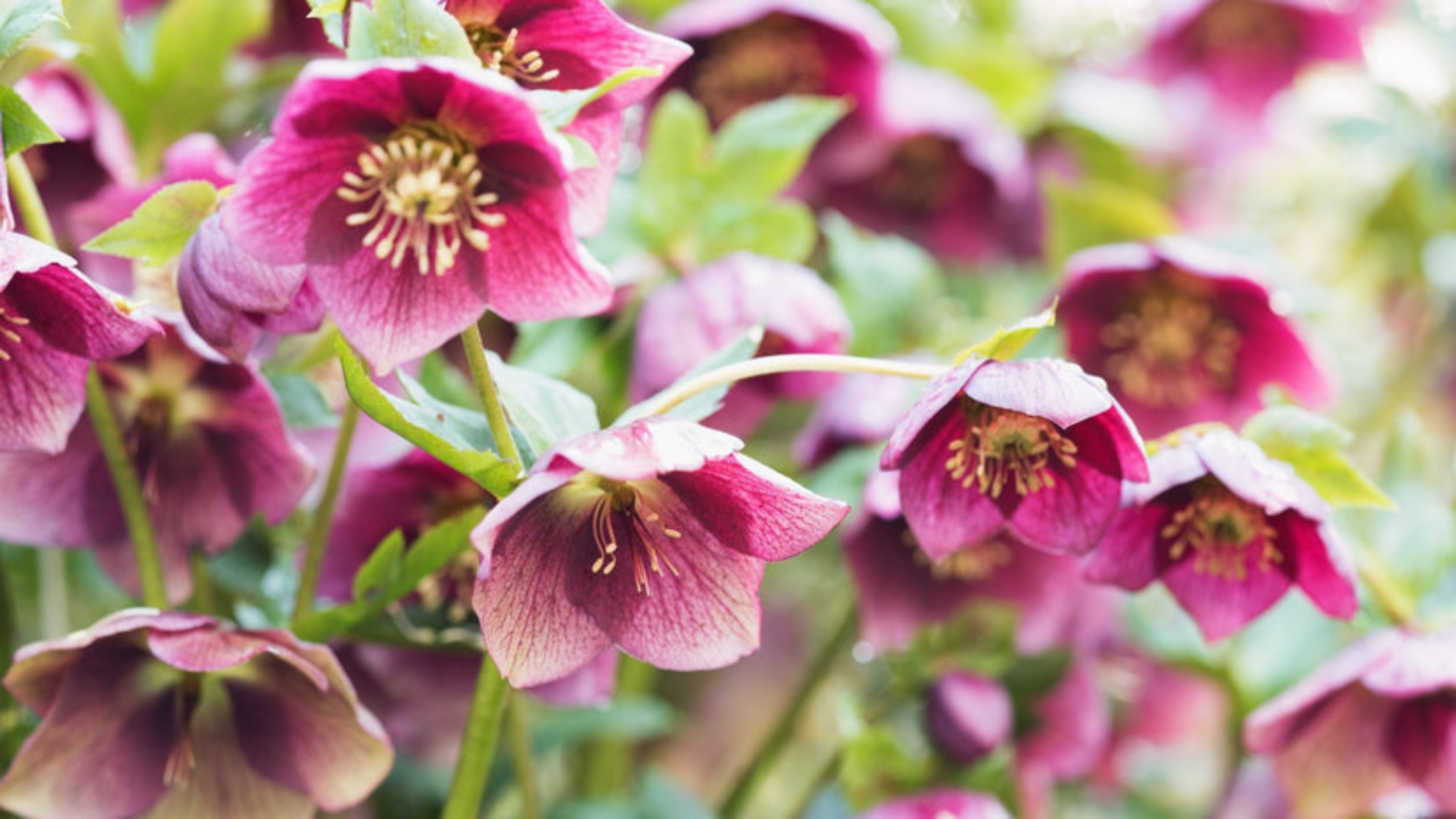
Hellebores are winter and early spring-blooming perennials that thrive in shady areas. Though beautiful, the plant is poisonous and should not be consumed for food.
| Category | Details |
|---|---|
| Scientific Name | Helleborus niger |
| Harvesting Season | Late winter to early spring |
| Commonly Found Region | Europe, particularly the Balkans |
| Blooming Period | December to March |
| Symbolism | Serenity, protection, and scandal |
| Benefits | Ornamental value, deer resistance |
How to Plant: Sow in moist, shaded soil in fall or spring.
Fun Fact: Also called the “Christmas Rose” due to its winter bloom.
3. Helenium
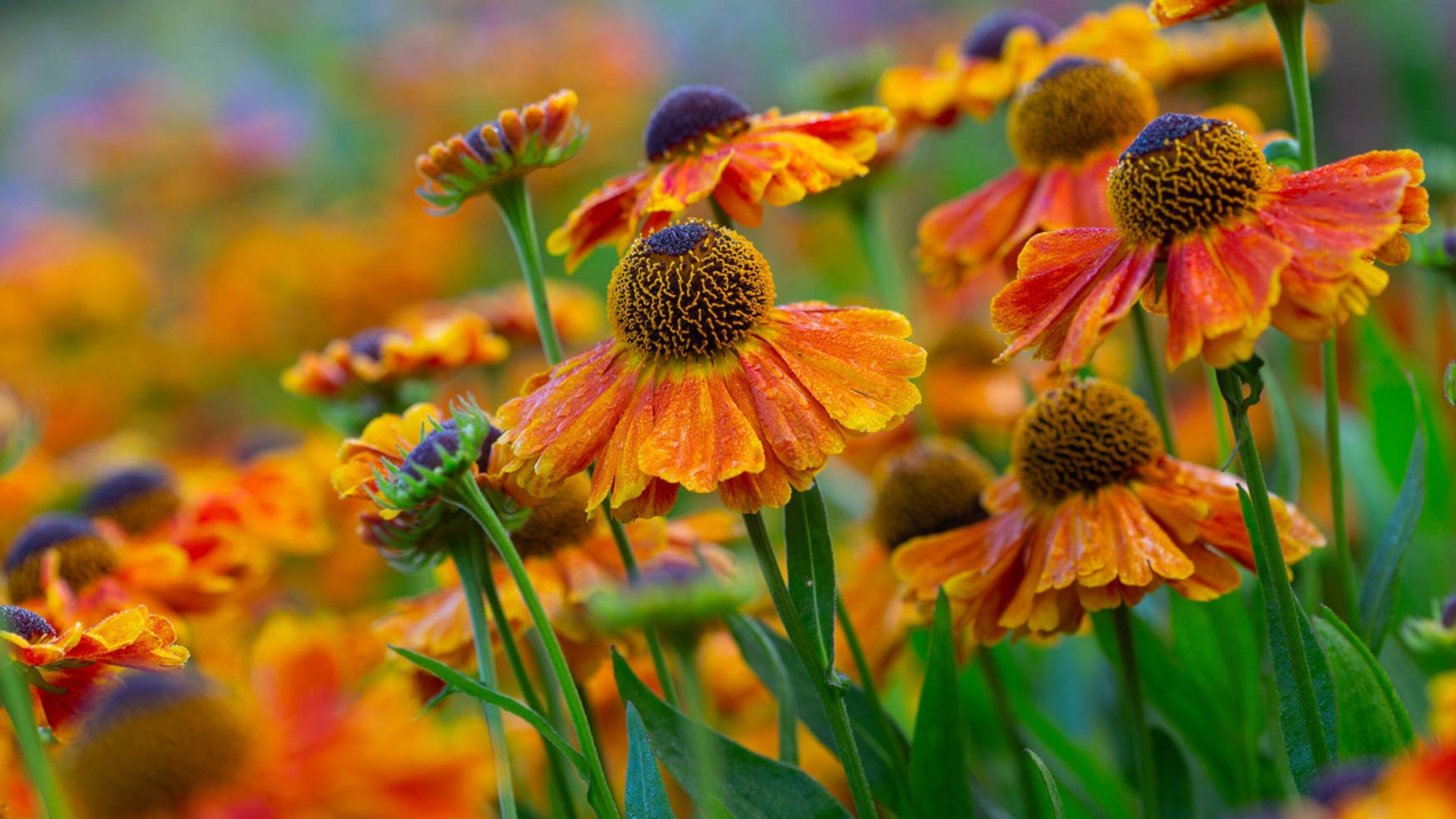
Helenium, also known as sneezeweed, is a bright and cheerful flower that lights up gardens in late summer. It’s not edible but adds vibrant hues to landscapes.
| Category | Details |
|---|---|
| Scientific Name | Helenium autumnale |
| Harvesting Season | Late summer to early fall |
| Commonly Found Region | North America |
| Blooming Period | July to October |
| Symbolism | Cheerfulness and health |
| Benefits | Pollinator attraction, garden color |
How to Plant: Sow in sunny, well-drained soil in spring.
Fun Fact: Native Americans once used its dried leaves in snuff mixtures.
4. Hosta

Hostas are shade-loving perennials prized for their lush foliage and occasional soft blooms. They come in a range of green, blue, and variegated tones.
| Category | Details |
|---|---|
| Scientific Name | Hosta spp. |
| Harvesting Season | Summer |
| Commonly Found Region | East Asia, particularly Japan |
| Blooming Period | Late spring to summer |
| Symbolism | Devotion, friendship, and peace |
| Benefits | Ornamental use, erosion control |
How to Plant: Plant in moist, shaded soil with good drainage.
Fun Fact: Hostas are edible in some cultures and used in tempura.
5. Heliconia
![]()
Heliconias are tropical flowers with striking, brightly colored bracts that resemble lobster claws. They thrive in humid climates and attract hummingbirds.
| Category | Details |
|---|---|
| Scientific Name | Heliconia rostrata |
| Harvesting Season | Year-round in tropical climates |
| Commonly Found Region | Central and South America, Caribbean |
| Blooming Period | All year in ideal conditions |
| Symbolism | Pride, beauty, and uniqueness |
| Benefits | Ornamental use, habitat for birds |
How to Plant: Grow in moist, rich soil with full sun or partial shade.
Fun Fact: Heliconia is related to bananas and bird-of-paradise.
6. Heather
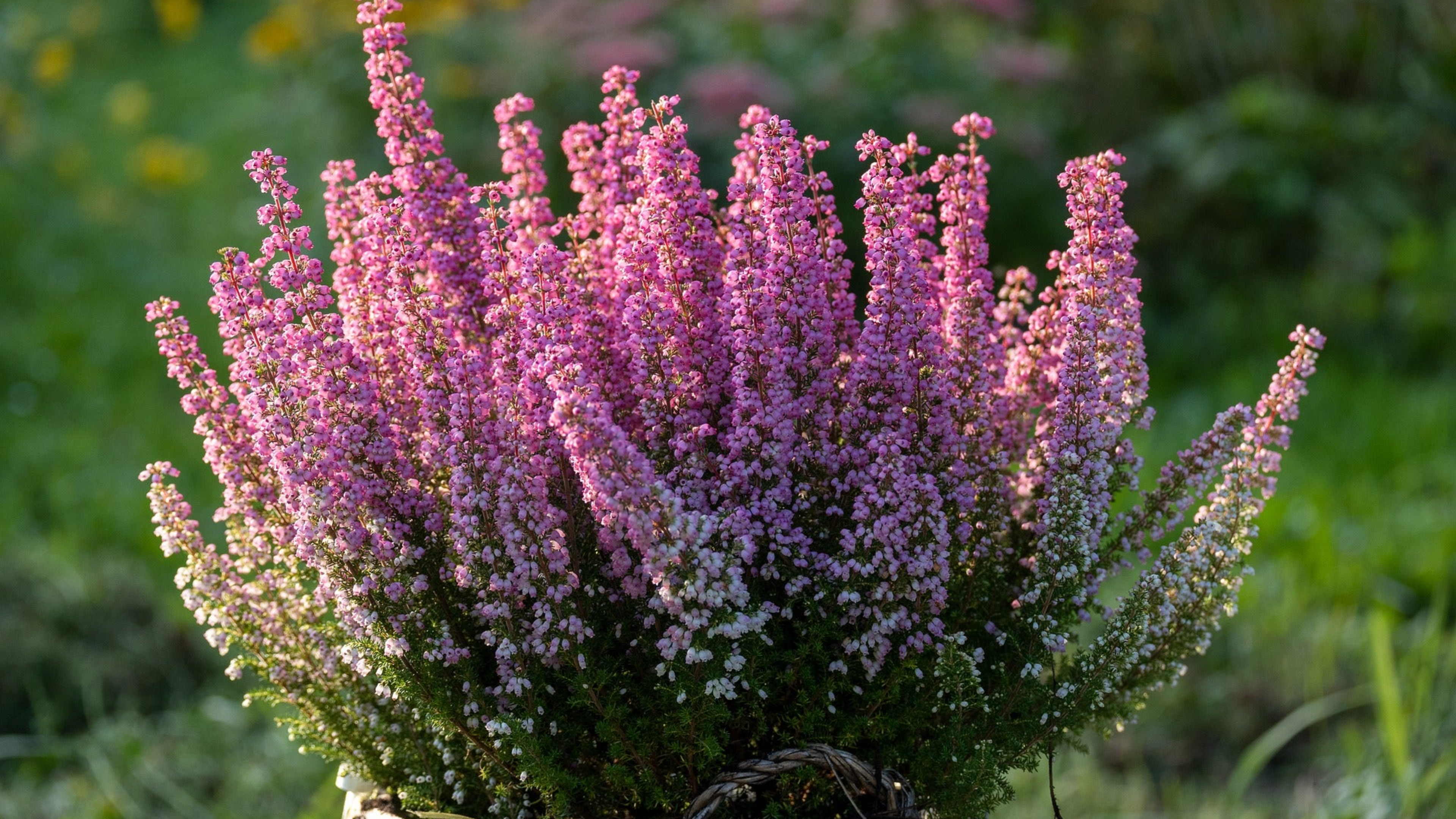
Heather is a small shrub with tiny pink, purple, or white blooms, often associated with moorlands and romantic landscapes.
| Category | Details |
|---|---|
| Scientific Name | Calluna vulgaris |
| Harvesting Season | Late summer to fall |
| Commonly Found Region | Europe and North America |
| Blooming Period | July to September |
| Symbolism | Good luck, admiration, and solitude |
| Benefits | Ground cover, erosion prevention |
How to Plant: Plant in acidic, sandy soil with full sun.
Fun Fact: White heather is considered a symbol of protection and luck.
7. Heliotrope
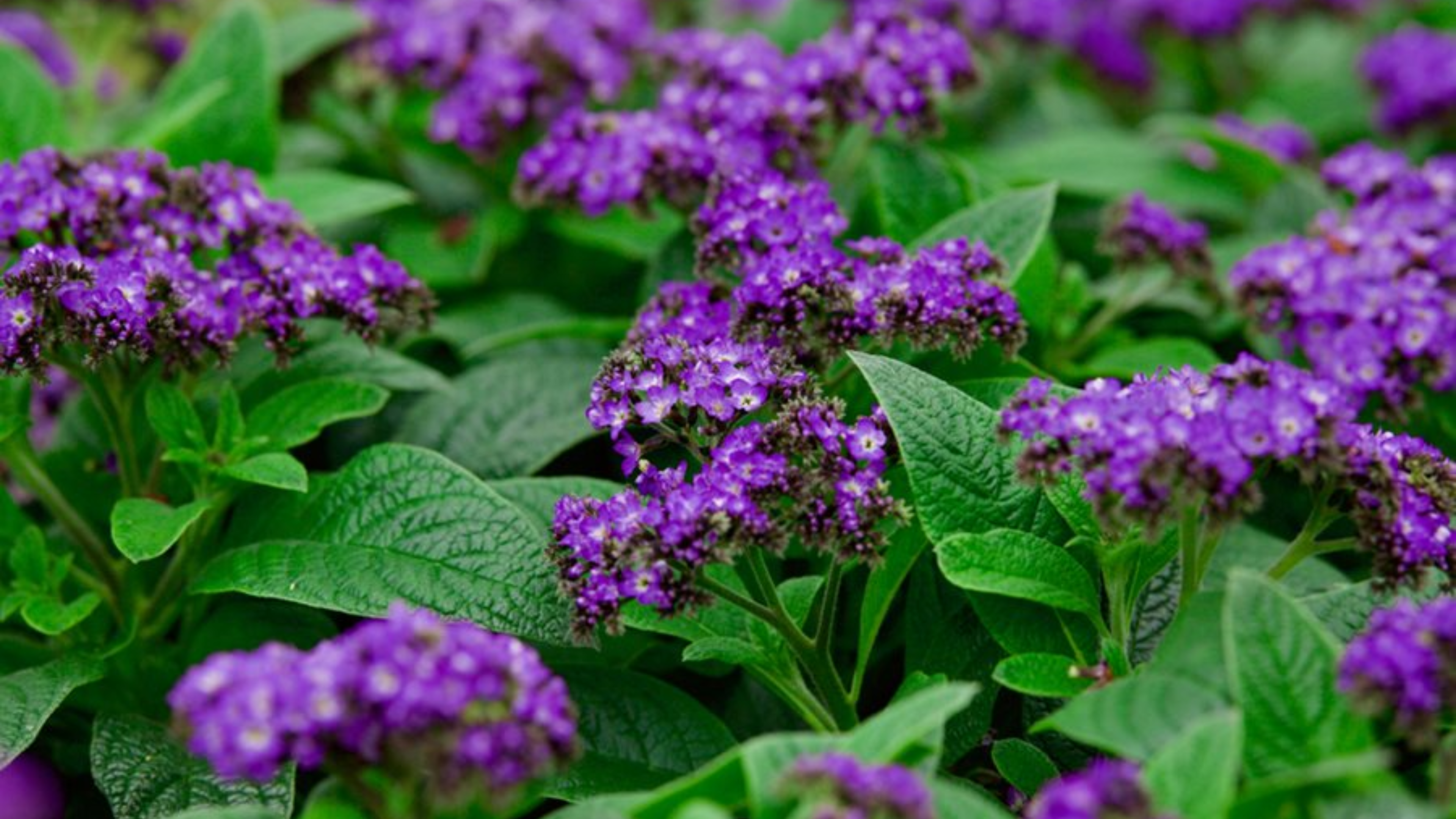
Heliotropes are fragrant flowers with deep purple or white blooms that turn toward the sun. They’re loved for their sweet vanilla scent.
| Category | Details |
|---|---|
| Scientific Name | Heliotropium arborescens |
| Harvesting Season | Summer |
| Commonly Found Region | Peru, South America |
| Blooming Period | Late spring to frost |
| Symbolism | Eternal love, devotion |
| Benefits | Attracts pollinators, ornamental |
How to Plant: Plant in well-drained soil with full sun.
Fun Fact: The name comes from Greek for “turning toward the sun.”
8. Hibiscus
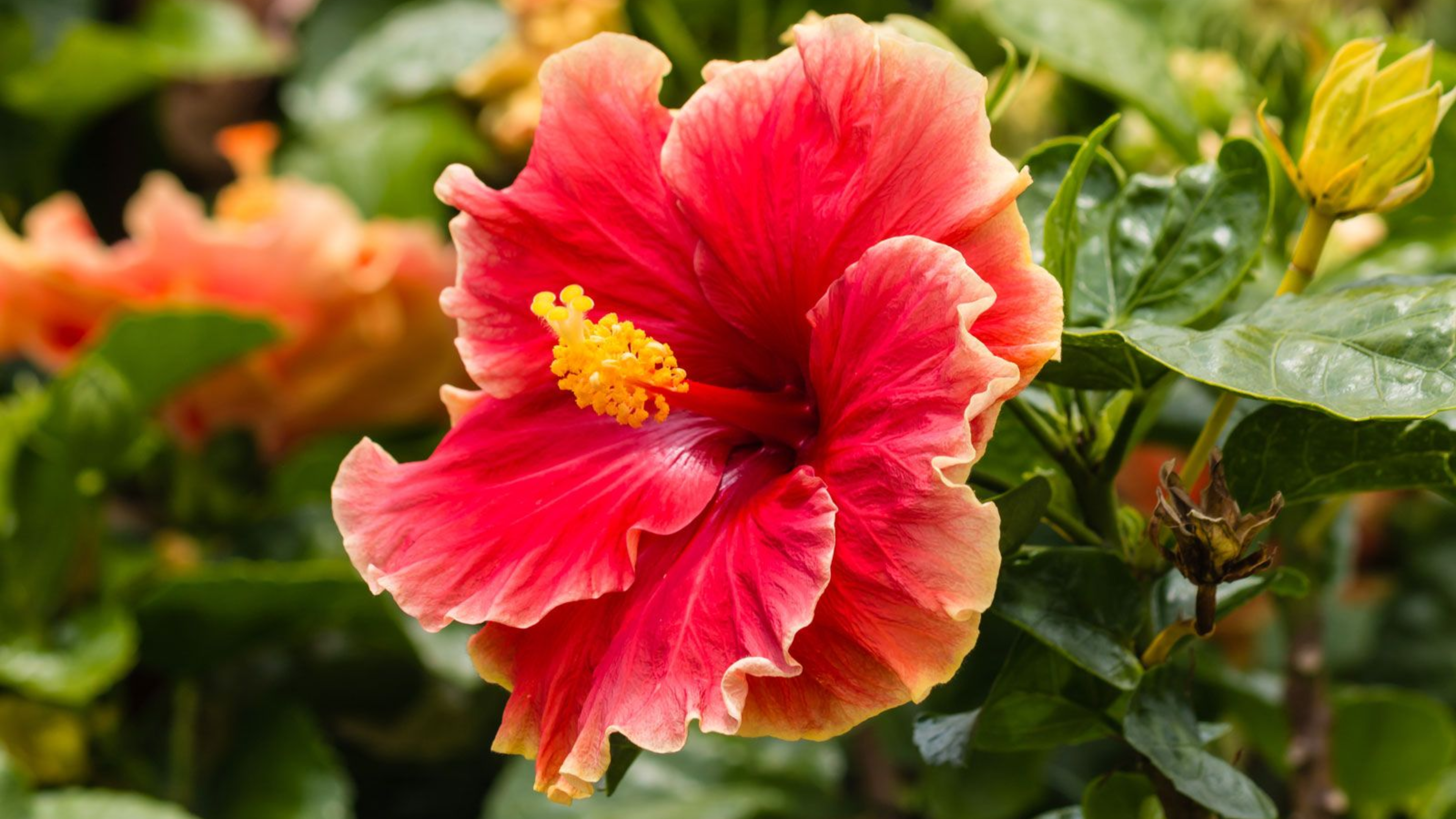
Hibiscus is a tropical flower famous for its vibrant, large blossoms. It’s commonly used in teas and herbal remedies due to its refreshing flavor and potential health benefits.
| Category | Details |
|---|---|
| Scientific Name | Hibiscus rosa-sinensis |
| Harvesting Season | Summer to fall |
| Commonly Found Region | Asia, Pacific Islands, Caribbean |
| Blooming Period | Late spring through autumn |
| Symbolism | Beauty, fame, and femininity |
| Benefits | Supports heart health, lowers blood pressure |
How to Plant: Plant in full sun and moist, well-drained soil.
Fun Fact: Hibiscus tea is rich in antioxidants and vitamin C.
9. Helichrysum
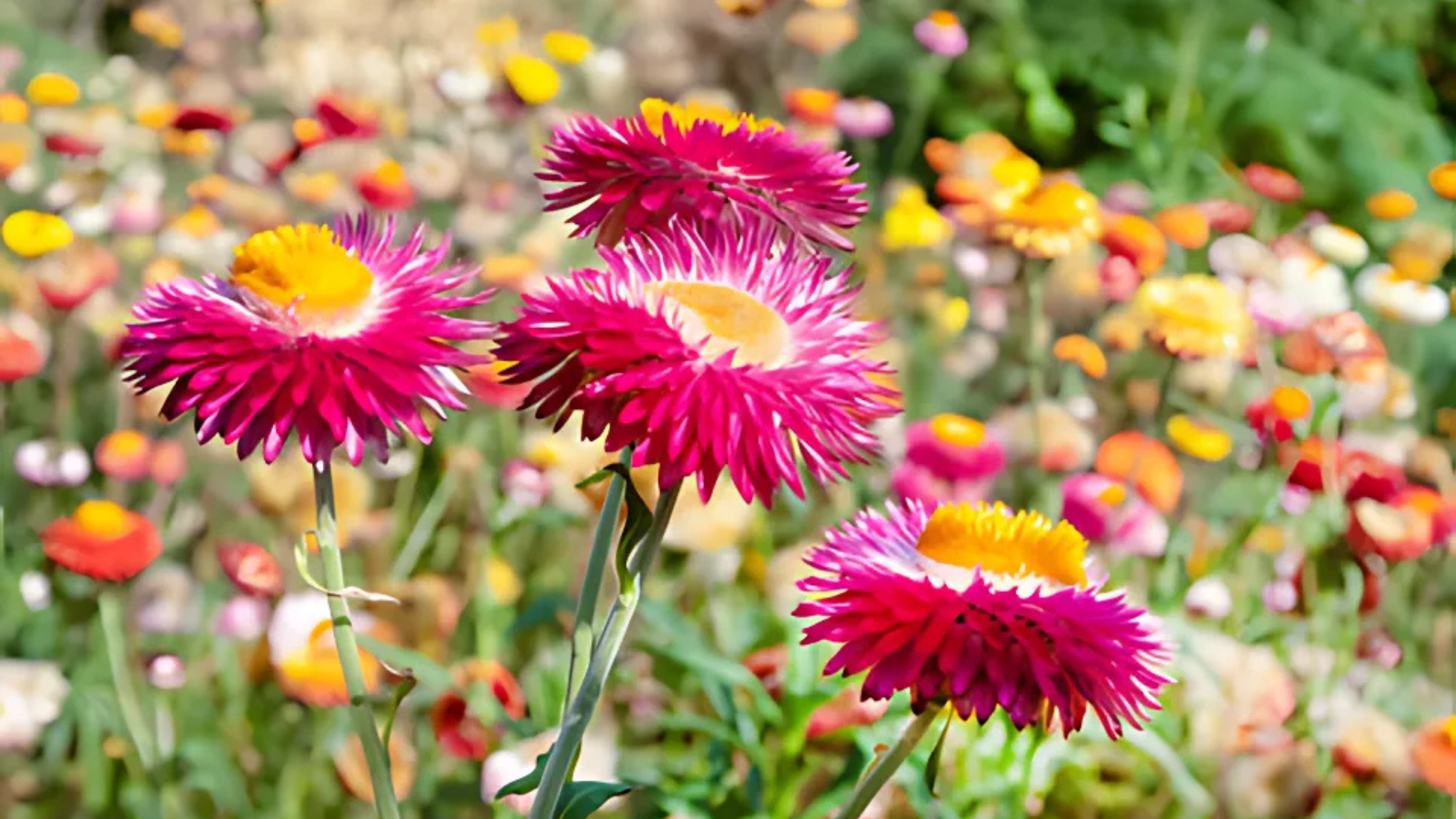
Helichrysum, often called the “everlasting flower,” is prized for its durable blooms. Its vibrant color, which remains even when dried, makes it a popular choice in flower arrangements. Its long-lasting nature makes it ideal for both decorative and medicinal uses.
| Category | Details |
|---|---|
| Scientific Name | Helichrysum bracteatum |
| Harvesting Season | Summer |
| Commonly Found Region | Australia, South Africa |
| Blooming Period | Late spring to early fall |
| Symbolism | Immortality, eternal love |
| Benefits | Skincare uses, anti-inflammatory |
How to Plant: Sow in full sun with well-draining soil.
Fun Fact: Essential oil from Helichrysum is prized in aromatherapy.
10. Hesperis (Dame’s Rocket)

Dame’s Rocket is a fragrant biennial plant known for its tall stems and vibrant, four-petaled flowers in shades of purple, white, or pink.
It commonly grows in wildflower meadows and along roadsides, adding color and scent to the landscape. Its blooms appear in spring or early summer, attracting pollinators like bees and butterflies.
| Category | Details |
|---|---|
| Scientific Name | Hesperis matronalis |
| Harvesting Season | Late spring to early summer |
| Commonly Found Region | Europe, naturalized in North America |
| Blooming Period | May to July |
| Symbolism | Femininity, desire, and elegance |
| Benefits | Attracts pollinators, erosion control |
How to Plant: Sow in early fall or spring in sunny areas.
Fun Fact: Often mistaken for phlox, but it has four petals instead of five.
11. Honeysuckle

Honeysuckle is a climbing vine recognized for its tubular, sweet-smelling flowers. These nectar-rich blooms attract hummingbirds and bees, making it a favorite among pollinators.
Its vibrant colors and fragrance make it a popular choice for gardens and landscapes.
| Category | Details |
|---|---|
| Scientific Name | Lonicera spp. |
| Harvesting Season | Late spring to fall |
| Commonly Found Region | Northern Hemisphere |
| Blooming Period | May to September |
| Symbolism | Devotion, sweetness, and affection |
| Benefits | Pollinator attraction, fragrance |
How to Plant: Grow in full sun to partial shade with moist soil.
Fun Fact: Children often sip the sweet nectar straight from the flower.
12. Hawthorn

Hawthorn is a flowering shrub or tree that produces clusters of white or pink blossoms in spring. It also bears small red fruits called haws, which are often used in herbal remedies and jams.
| Category | Details |
|---|---|
| Scientific Name | Crataegus monogyna |
| Harvesting Season | Spring for flowers, autumn for fruit |
| Commonly Found Region | Europe, Asia, North America |
| Blooming Period | April to June |
| Symbolism | Love, protection, and hope |
| Benefits | Heart health, antioxidant-rich |
How to Plant: Plant in full sun with well-drained soil.
Fun Fact: In folklore, it was believed to ward off evil spirits.
13. Hairy Vetch
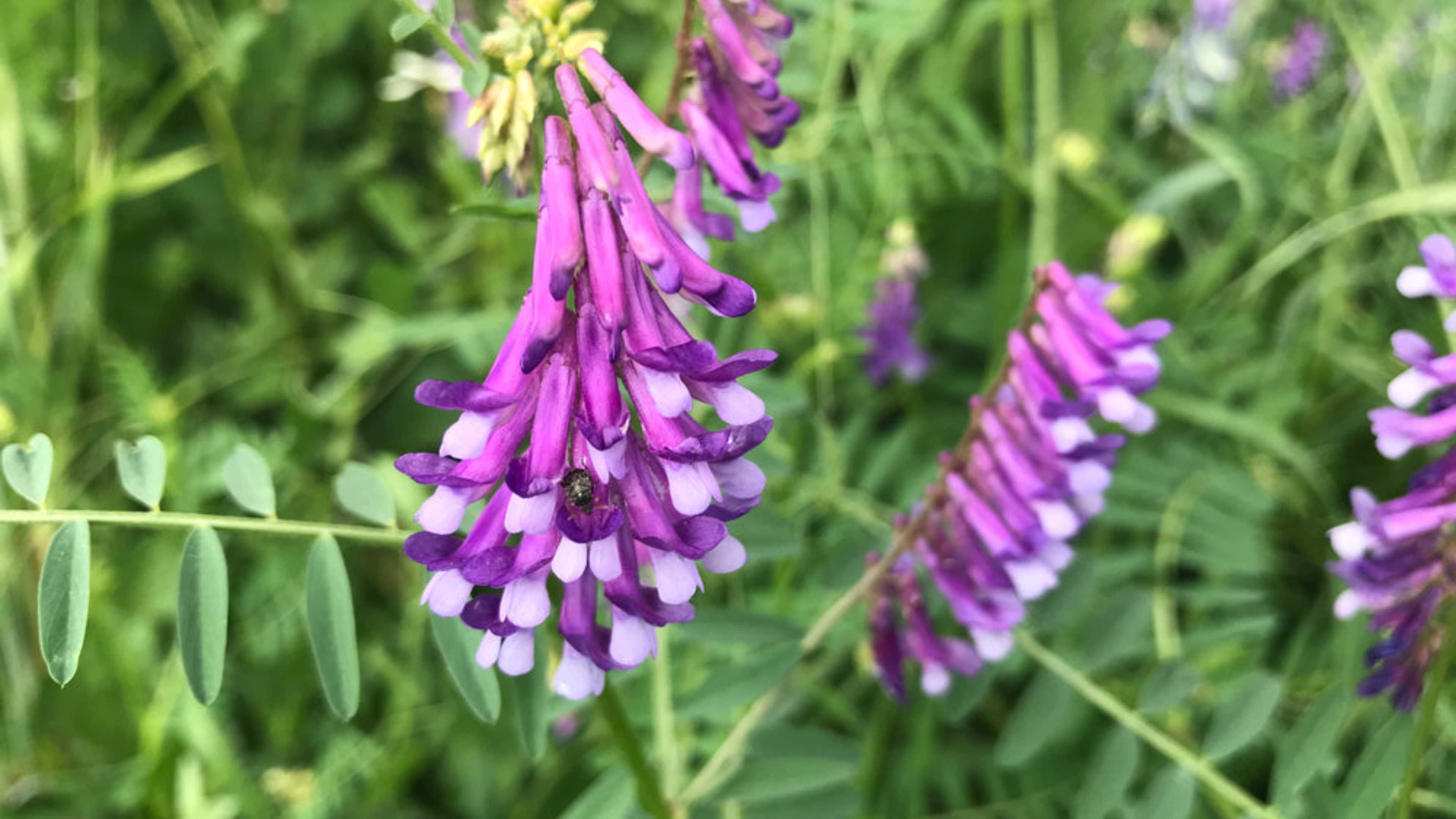
Hairy Vetch is a vining legume with delicate purple flowers. It’s a fast-growing, cold-hardy plant often used as a cover crop to enrich the soil with nitrogen.
| Category | Details |
|---|---|
| Scientific Name | Vicia villosa |
| Harvesting Season | Late spring to early summer |
| Commonly Found Region | Europe, North America, Asia |
| Blooming Period | April to June |
| Symbolism | Growth, resilience, restoration |
| Benefits | Soil fertility, erosion control |
How to Plant: Broadcast seeds in fall or early spring for best results.
Fun Fact: Hairy Vetch can fix up to 200 pounds of nitrogen per acre.
14. Houttuynia
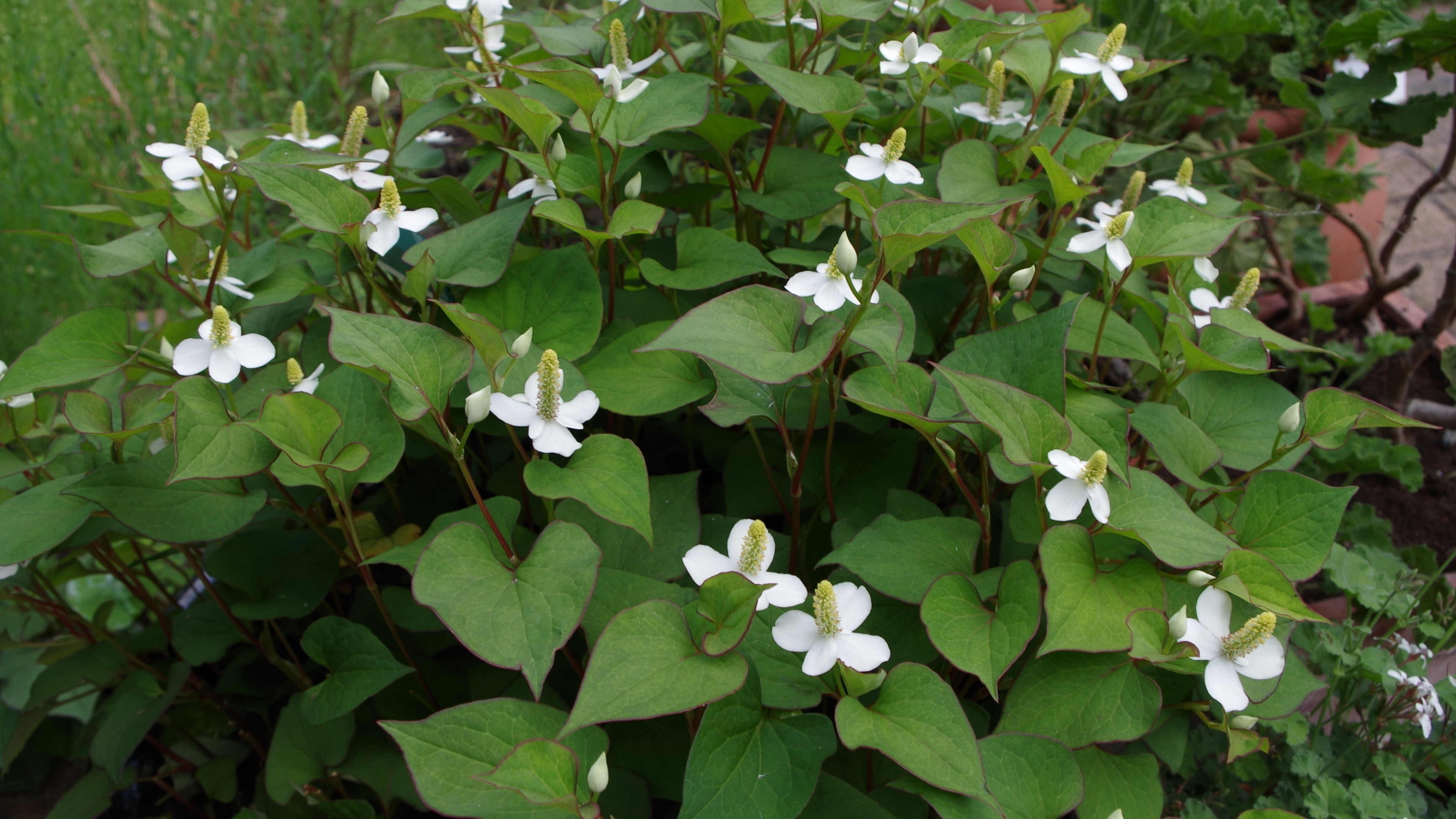
Houttuynia is a ground-covering plant with heart-shaped leaves and small white flowers.
It is recognized for its strong, distinctive scent and is commonly used in Asian cuisine. Its unique aroma and flavor make it a popular herb in many traditional dishes.
| Category | Details |
|---|---|
| Scientific Name | Houttuynia cordata |
| Harvesting Season | Summer |
| Commonly Found Region | East Asia |
| Blooming Period | May to July |
| Symbolism | Healing, vitality, and persistence |
| Benefits | Medicinal uses, edible leaves |
How to Plant: Plant in moist, partly shaded areas with rich soil.
Fun Fact: It’s called “fish mint” due to its distinctive aroma.
15. Hydrangea
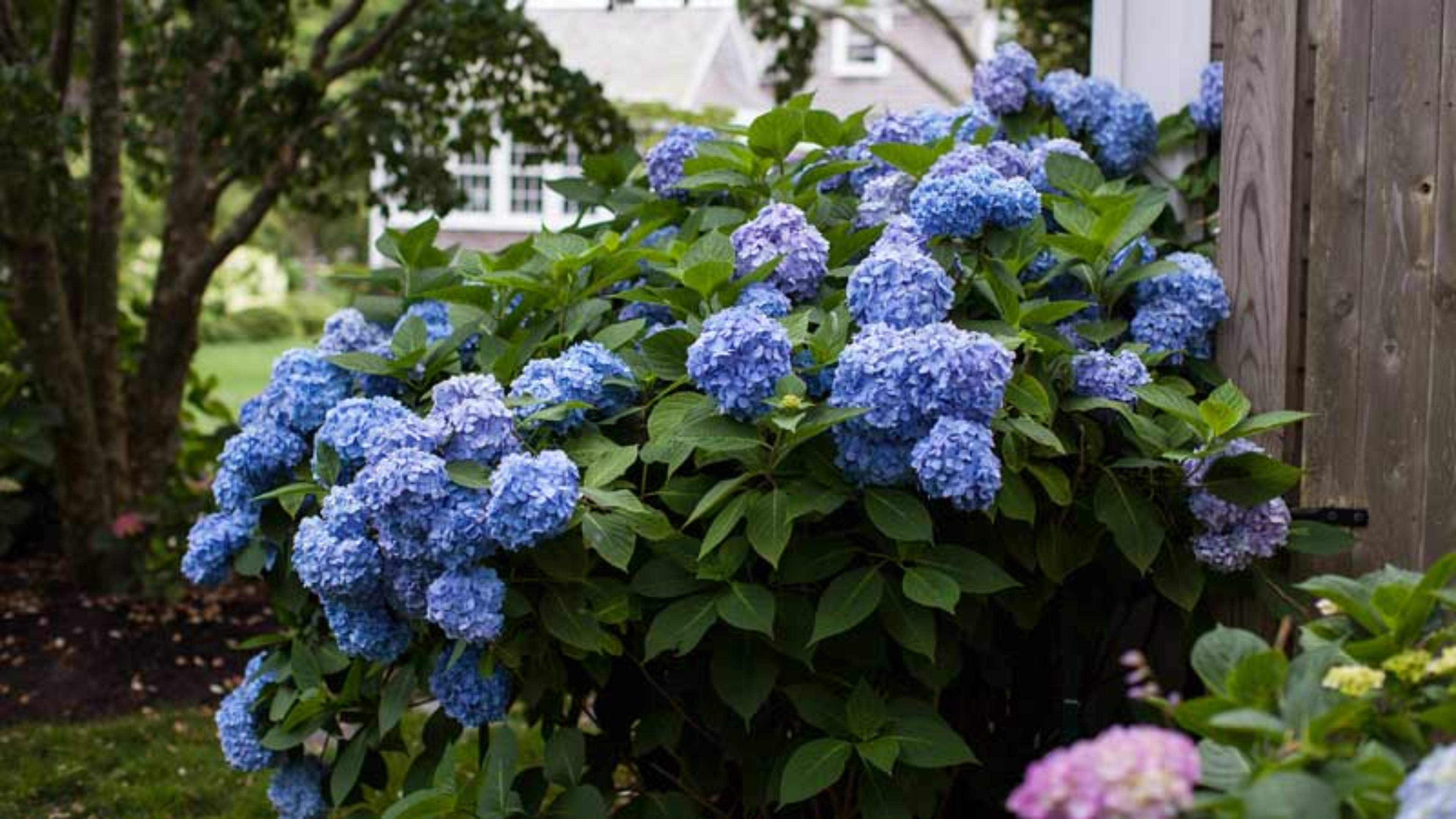
Hydrangeas are bushy shrubs known for their large, globe-like flower clusters. The color of the blooms- blue, pink, or white. It depends on the soil’s pH level.
These versatile plants are a popular choice for gardens due to their striking appearance and ability to thrive in various conditions. Hydrangeas add vibrant color and charm to landscapes throughout the growing season.
| Category | Details |
|---|---|
| Scientific Name | Hydrangea macrophylla |
| Harvesting Season | Late spring to fall |
| Commonly Found Region | Asia, North America |
| Blooming Period | May to September |
| Symbolism | Gratitude, grace, and heartfelt emotion |
| Benefits | Ornamental beauty, soil indicator |
How to Plant: Plant in partial shade with moist, acidic soil.
Fun Fact: Blue flowers indicate acidic soil; pink blooms indicate alkaline.
16. Hardenbergia
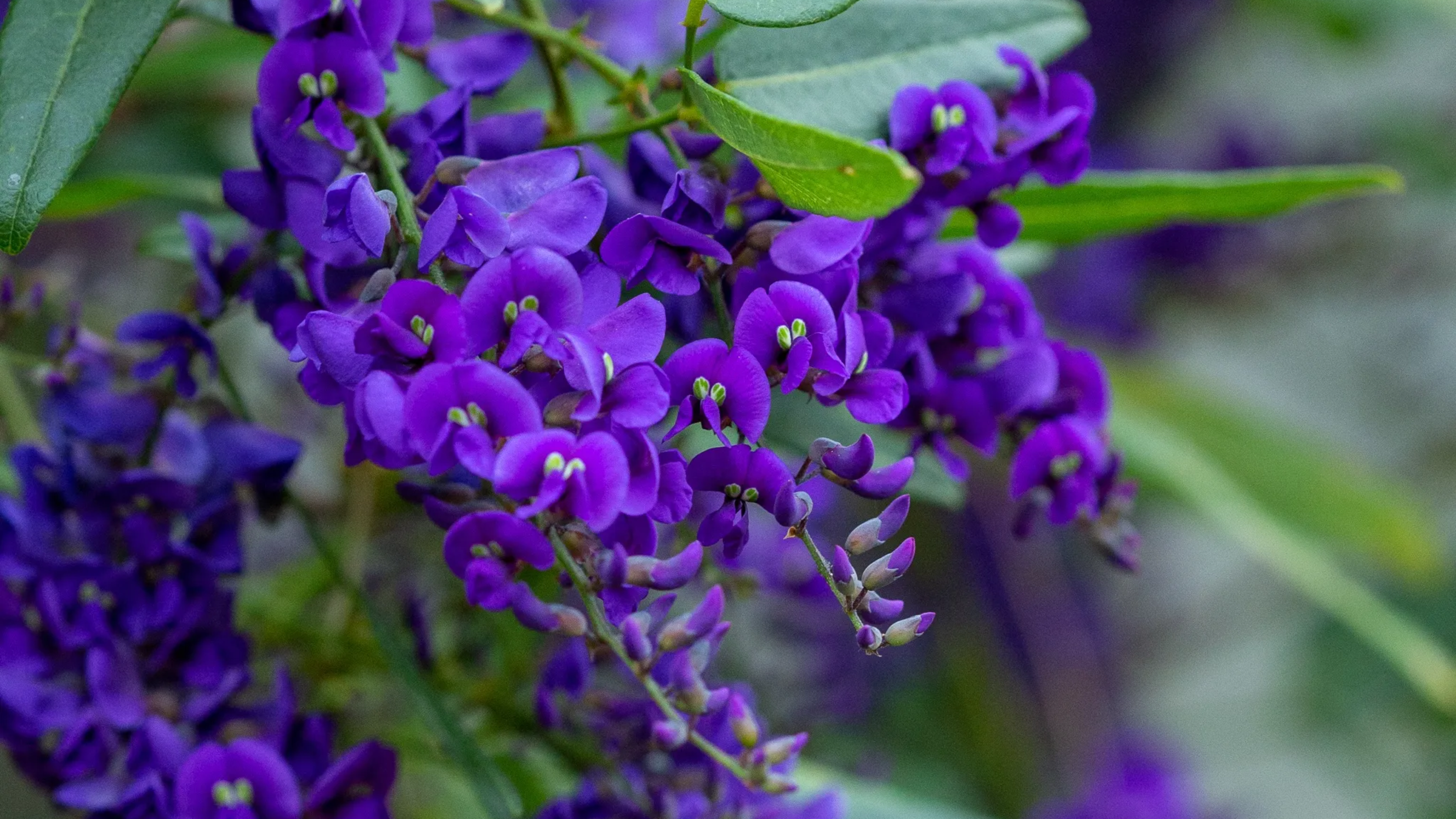
Hardenbergia is a vigorous climbing plant known for its pea-like flowers in purple, pink, or white. It typically blooms in late winter or early spring, adding color to gardens during the colder months.
This hardy plant is popular for trellises and fences due to its rapid growth and vibrant blossoms.
| Category | Details |
|---|---|
| Scientific Name | Hardenbergia violacea |
| Harvesting Season | Late winter to early spring |
| Commonly Found Region | Australia |
| Blooming Period | July to October (Southern Hemisphere) |
| Symbolism | Strength, freedom, and rebirth |
| Benefits | Erosion control, visual screening |
How to Plant: Grow in full sun or partial shade with well-drained soil.
Fun Fact: Also known as “False Sarsaparilla” in Australia.
17. Holboellia
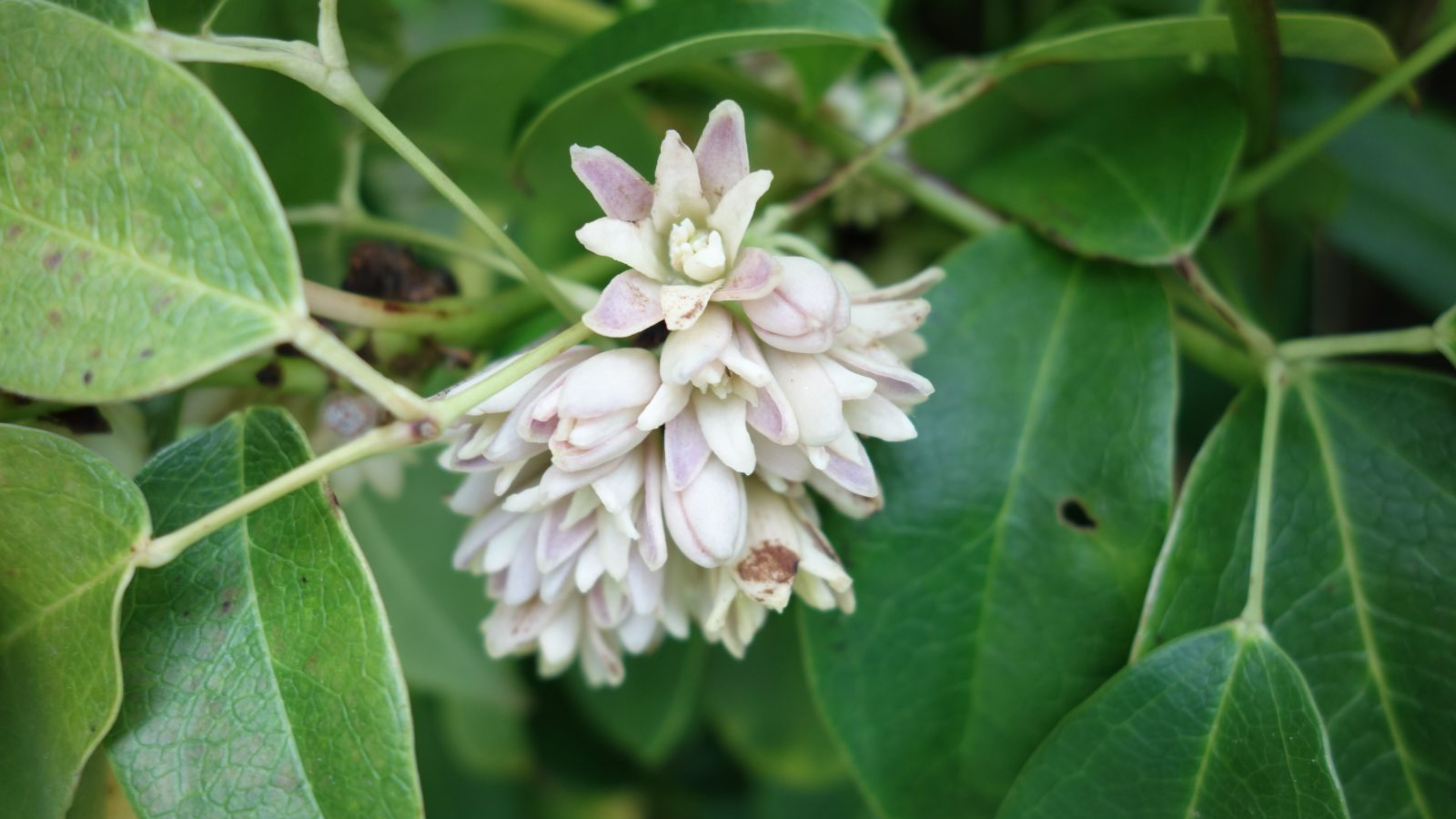
Holboellia is a semi-evergreen vine with fragrant, star-shaped flowers and sausage-shaped edible fruits. It’s valued for both its beauty and edible appeal.
| Category | Details |
|---|---|
| Scientific Name | Holboellia latifolia |
| Harvesting Season | Autumn (for fruits) |
| Commonly Found Region | Himalayas, China |
| Blooming Period | Spring |
| Symbolism | Mystery, abundance, and creativity |
| Benefits | Edible fruit, ornamental vine |
How to Plant: Plant in partial shade with moist, fertile soil.
Fun Fact: Its fruit has a sweet pulp and is sometimes used in desserts.
Other Flowers That Start with H for Your Garden List
-
Hooded Skullcap
-
Hooker’s Onion
-
Huernia
-
Helipterum
-
Hummingbird Mint (Agastache)
-
Himalayan Blue Poppy
-
Hosta Lily
-
Helenium Autumnale
-
Hesperantha
-
Hyssop
-
Hottentot Fig
-
Hedychium (Ginger Lily)
-
Hemerocallis (Daylily)
-
Hieracium (Hawkweed)
-
Helichrysum Italicum (Curry Plant)
-
Heliopsis
-
Helenium Amarum
-
Hesperaloe
-
Horned Poppy
-
Hoya
-
Helleborus Foetidus
-
Hedera (Ivy – when flowering)
-
Hedyotis
-
Helianthemum (Rock Rose)
-
Heterocentron
-
Hunnemannia (Mexican Tulip Poppy)
-
Humble Plant (Mimosa Pudica)
-
Hakea
-
Heliotropium Arborescens
-
Hop Clover (Trifolium campestre – flowering clover)
-
Hesperocallis (Desert Lily)
-
Hairy Toadflax
-
Hooker’s Evening Primrose
-
Hyacinthoides (Spanish Bluebell)
-
Hoodia
-
Heliotropium Europaeum
-
Helleborus Niger
-
Helenium Flexuosum
-
Hardenbergia Violacea
-
Hedysarum
Tips for Keeping Flowers that Start with H Fresh
Most H flowers need proper care to stay fresh and healthy in your garden. Good plant care begins with basic growing practices and extends to specific maintenance needs.
When you plant H flowers, you need to consider their soil, water, and sun needs. Each flower type has its own requirements to look its best. Here are some helpful tips to keep your H flowers fresh:
- Water flowers early in the morning to reduce evaporation and fungal growth
- Remove old blooms regularly to encourage new flower growth
- Apply mulch around plants to keep soil moist and reduce weeds
- Feed plants with suitable fertilizer during their growing season
- Check for pests weekly and treat problems early
- Plant H flowers in groups based on similar water and sun needs
- Protect tender H flowers from harsh weather with covers when needed
- Stake tall H flower varieties to prevent damage from wind
- Ensure proper spacing between plants for good air flow
With these simple steps, your H flowers will stay fresh longer and make your garden look more attractive throughout their blooming season.
Wrapping It Up
Now that we’ve examined beautiful flowers that start with H, it’s time to select your favorites for your garden.
These plants offer something for every garden style, from small spaces to large landscapes.
Remember that success with H flowers depends on matching each plant to the right growing conditions. For the best results, pay attention to soil, sunlight, and water needs.
H flowers can bring color, fragrance, and life to your outdoor spaces. With proper care, these plants will reward you with beautiful blooms season after season.
Which flowers that start with H will you plant first? Your garden’s unique personality is waiting to bloom!
Share your favorites in the comments below! Have you grown any of these plants?
We’d love to hear your tips and see photos of your garden treasures. If you found this guide helpful, please share it with fellow garden enthusiasts.

